Understanding fractions Geometry Worksheets for Ages 4-8 - Page 2
36 filtered results
-
From - To


Comparing Shares Worksheet
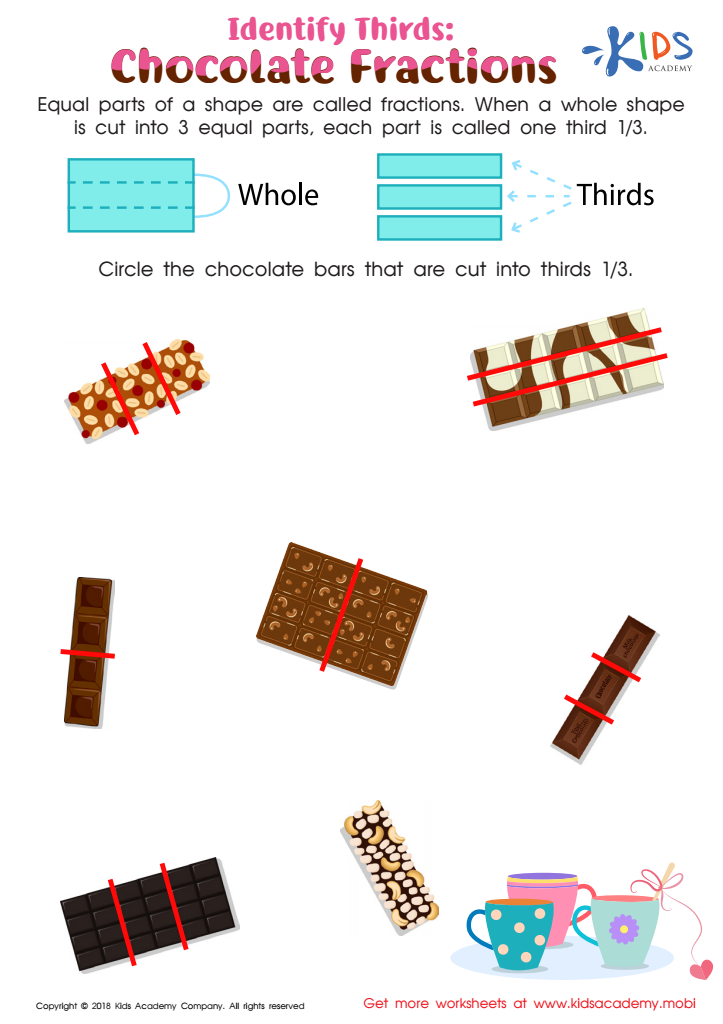

Identify Thirds: Chocolate Fractions Worksheet
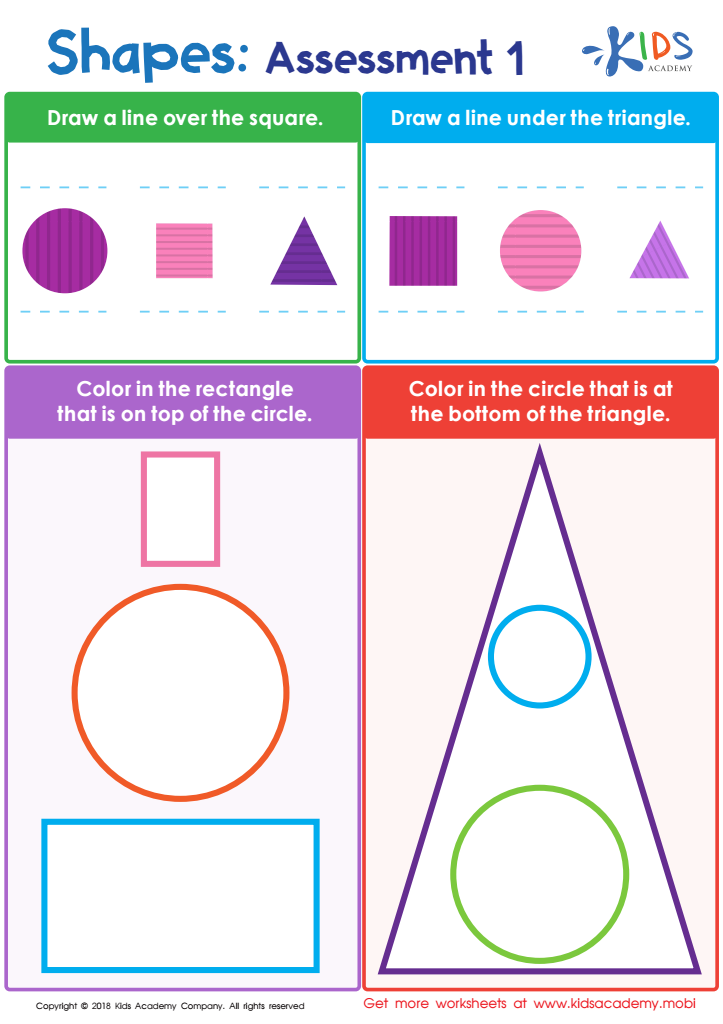

Shapes: Assessment 1 Worksheet
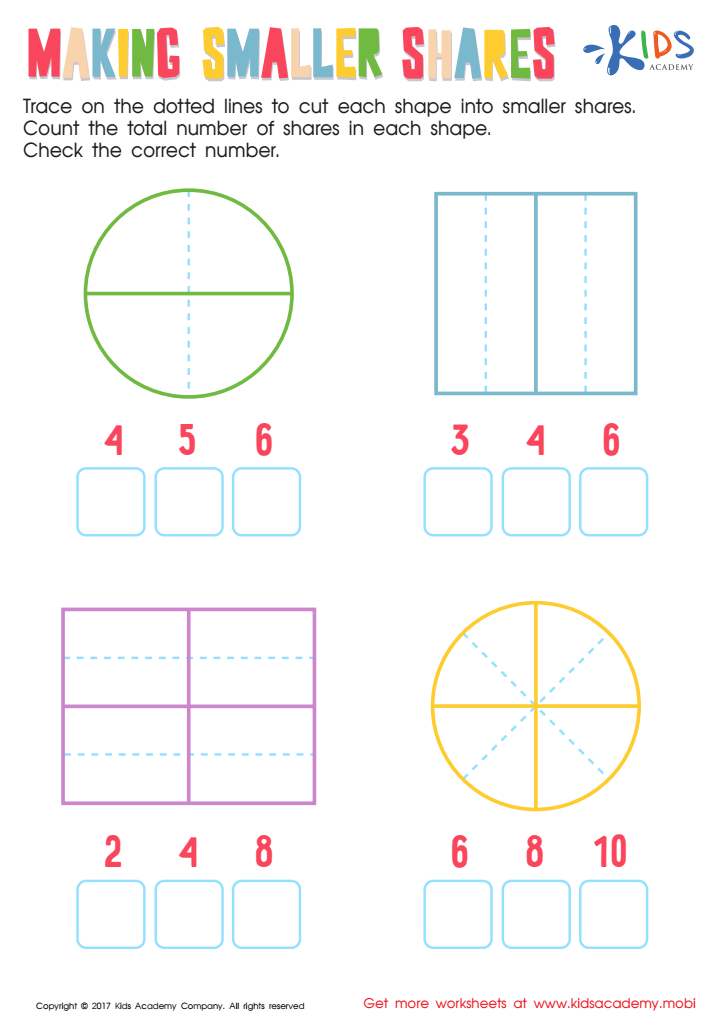

Making Smaller Shares Worksheet
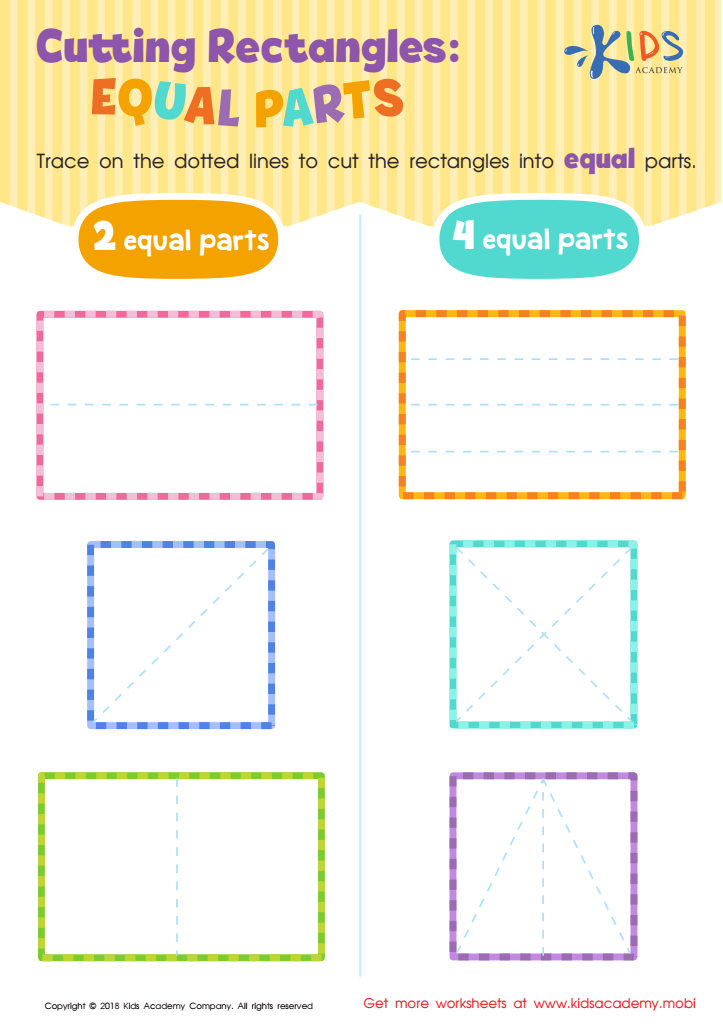

Cutting Rectangles: Equal Parts Worksheet
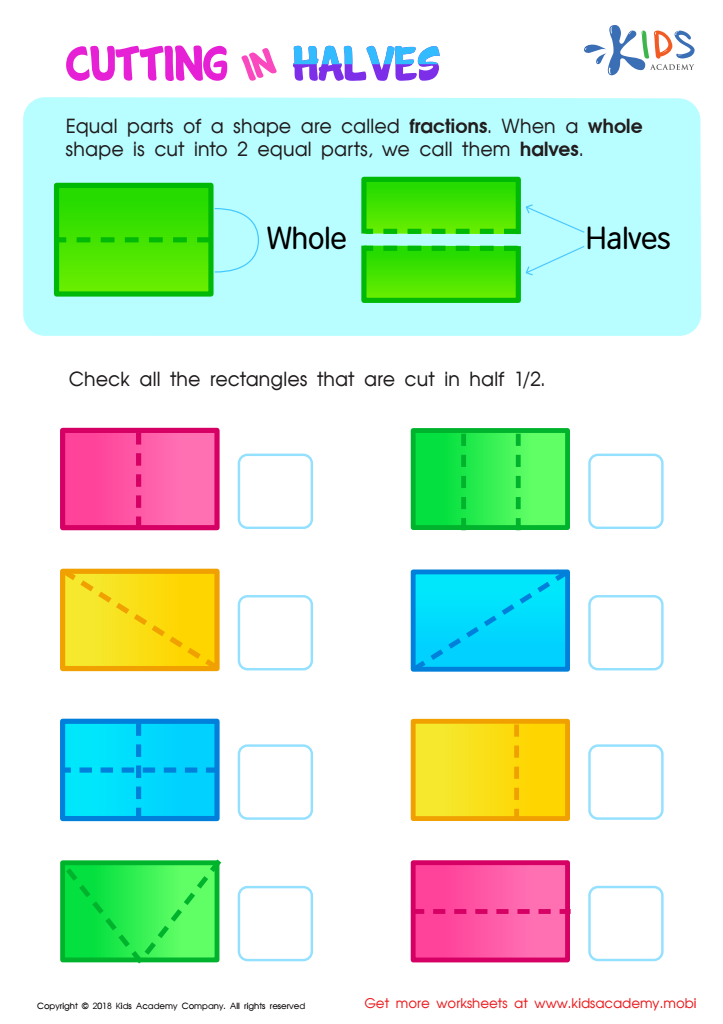

Cutting in Halves Worksheet
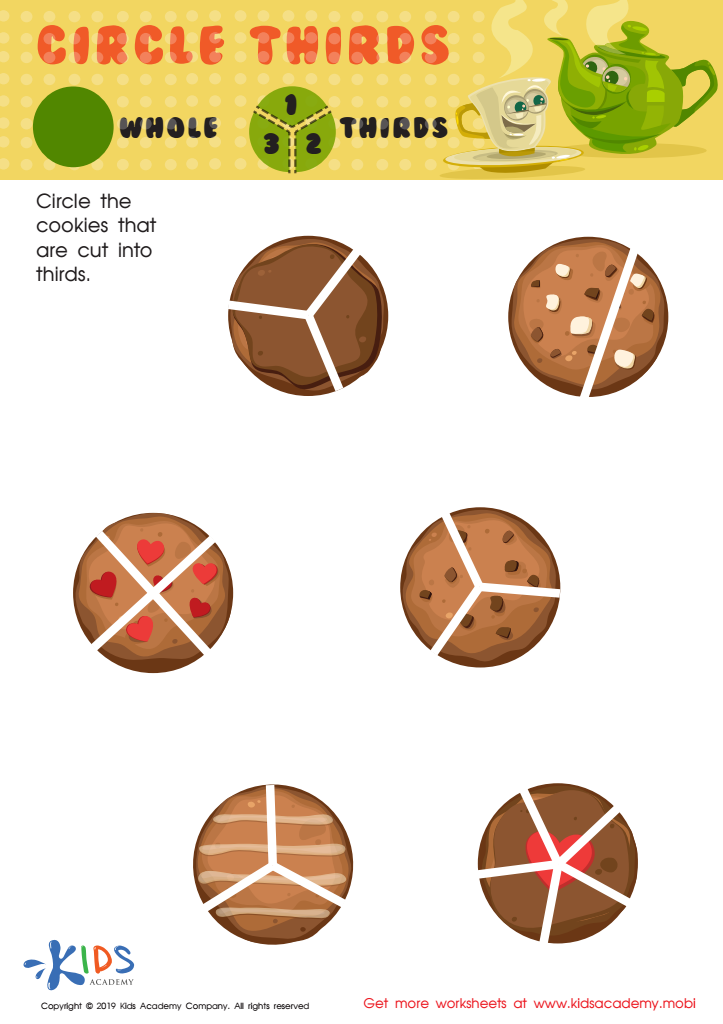

Circle Thirds Worksheet
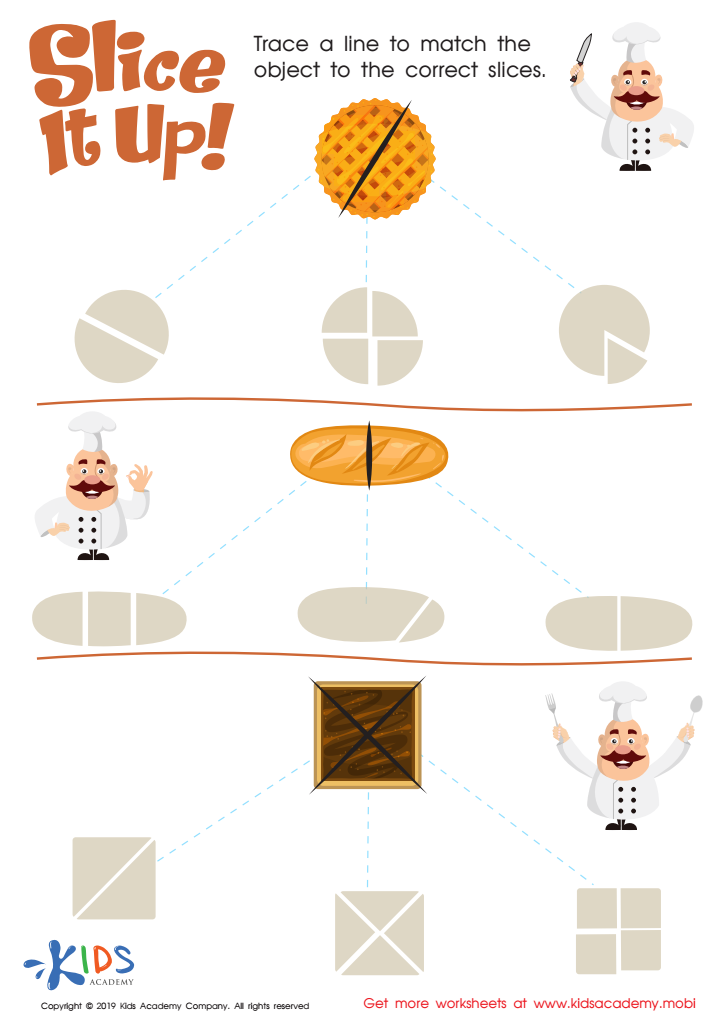

Slice It Up Worksheet
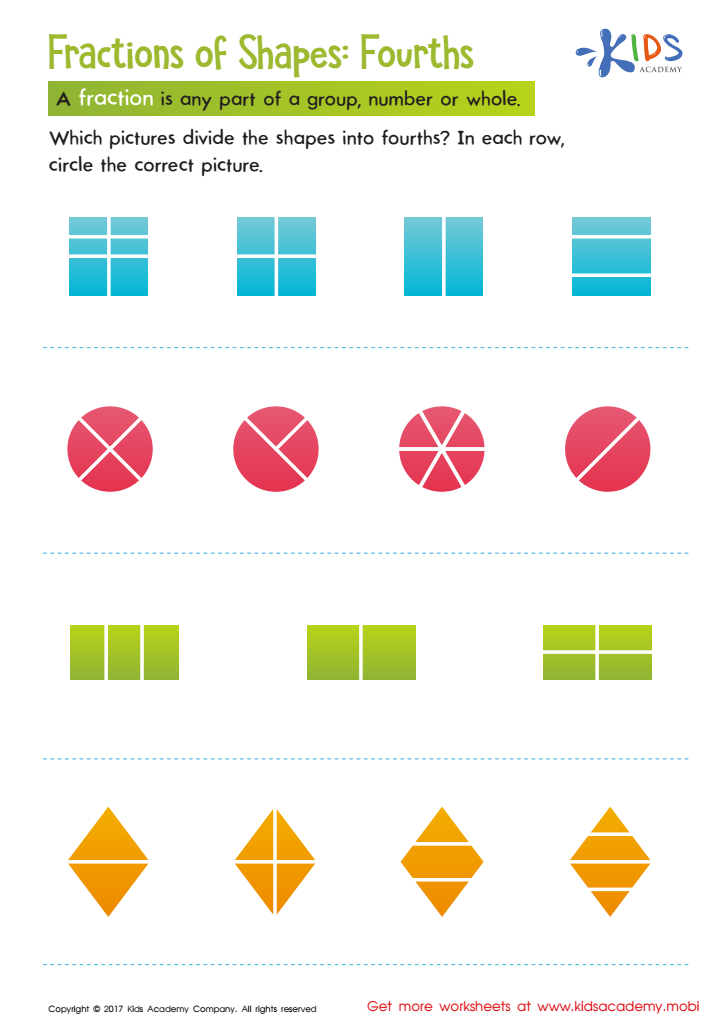

Fractions of Shapes Worksheet
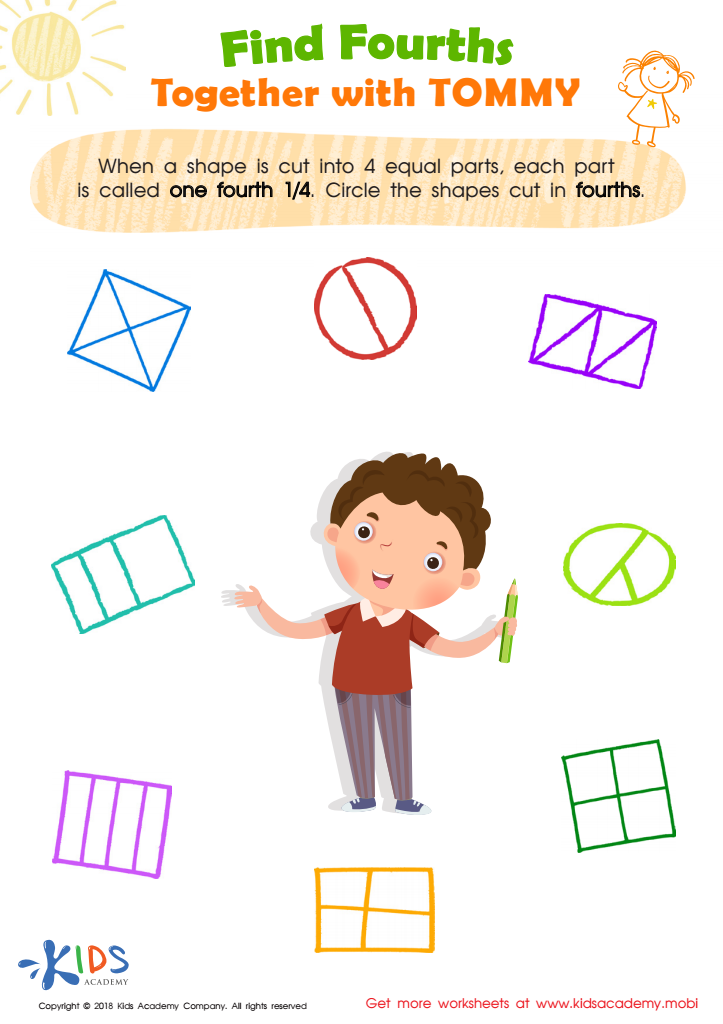

Find Fourths Together with Tommy Worksheet
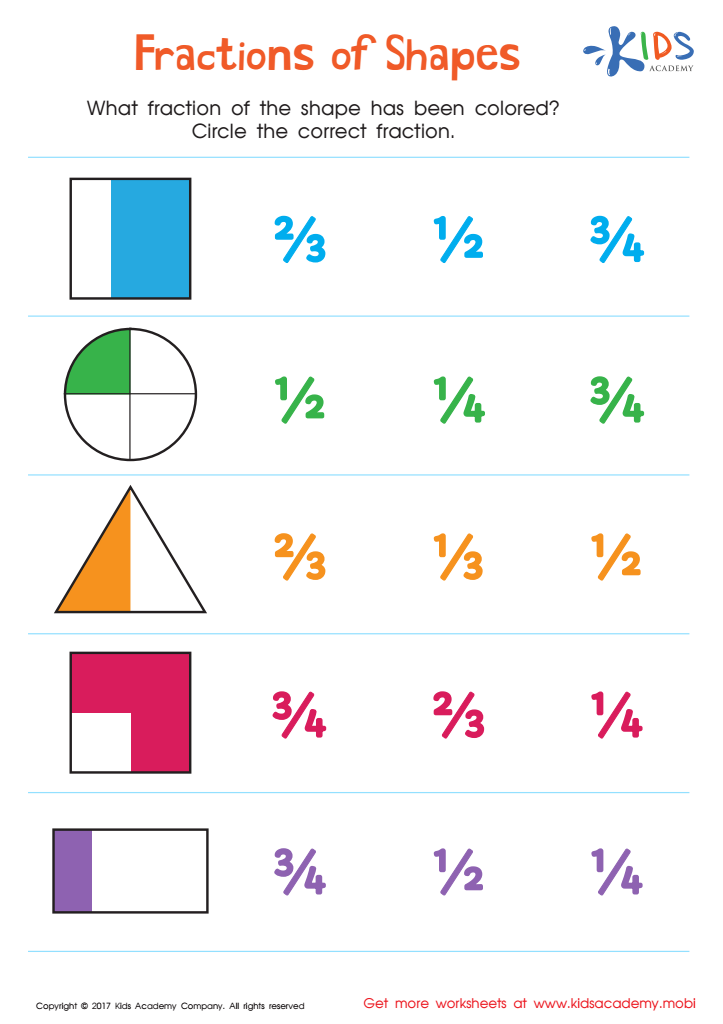

Fractions of Shapes: Math Concept Worksheet
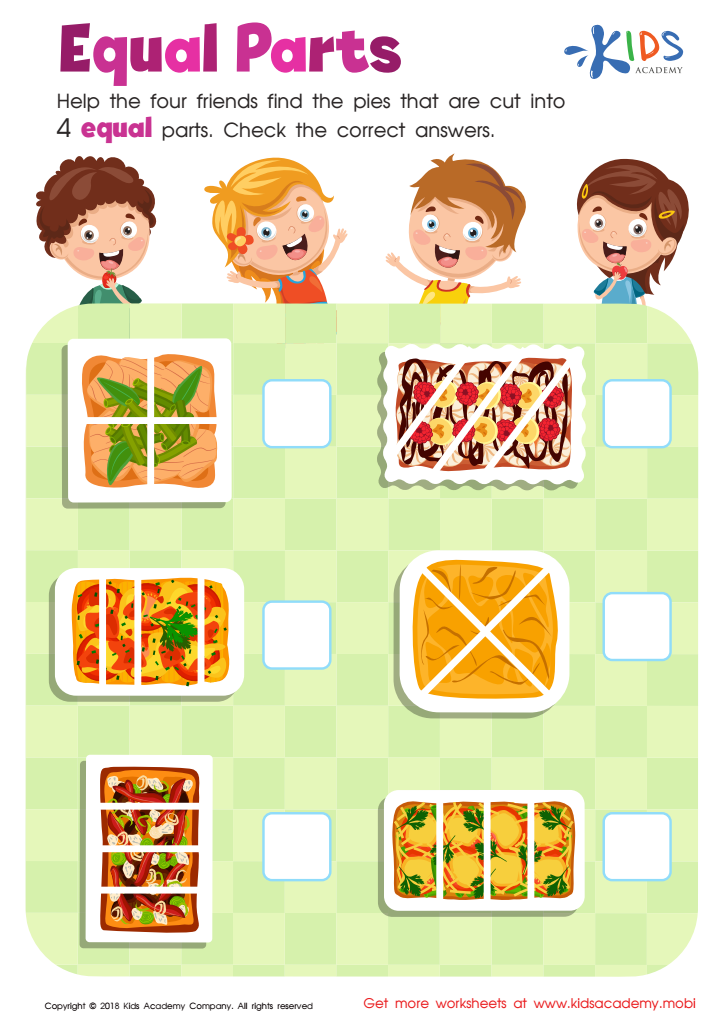

Equal Parts: Food Worksheet
Understanding fractions and geometry at an early age, specifically between ages 4-8, is crucial because these foundational concepts form the bedrock of mathematical reasoning and problem-solving skills. During these early years, children's cognitive development is highly receptive to new information, making it the optimal time to introduce spatial awareness and fractional concepts.
Fractions are fundamental in understanding parts of a whole, equivalency, and proportional reasoning. They appear frequently in daily life and later academic subjects like algebra, science, and even art. Early familiarity eases future learning by providing a strong conceptual framework.
Geometry helps children comprehend and organize the world around them. It introduces them to shapes, size, space, and the relationships between objects. This spatial awareness enhances their ability to solve puzzles, build structures, and even navigate their environment. Through geometry, children develop critical thinking and visualization skills.
By incorporating fractions and geometry into early education, parents and teachers help children build confidence and curiosity in math. Activities like dividing a pizza into slices or playing with building blocks can make these concepts tangible and engaging. Understanding these mathematical foundations early on makes subsequent, more complex concepts easier to grasp, paving the way for academic success and a positive attitude towards learning.
 Assign to My Students
Assign to My Students
















